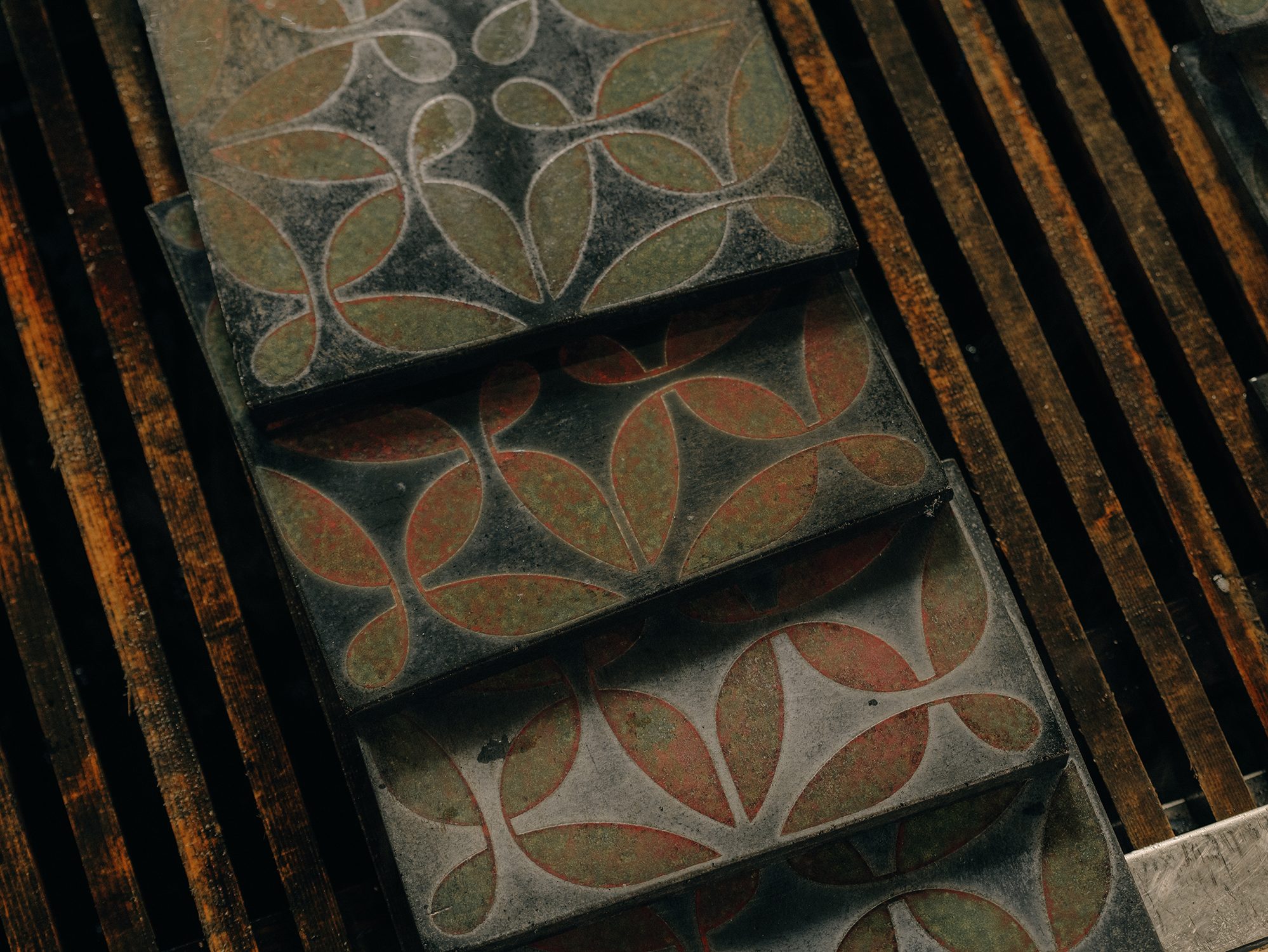There is something beautifully unexplainable about spontaneity. The unexpected always seems to feel more alive, more real, and more precious. Those unplanned moments endow everything else with a unique beauty, a beauty that cannot be explained in itself. Spontaneous interruptions turn into delightful surprises.
This serendipity is actually the basis of KARAK Tiles’ DNA. These handmade ceramic Raku tiles from Austria are the materialization of how unpredictable outcomes provide an unmatched beauty. Giving the element of chance free rein, the result is an injection of life into every space that is transformed by these tiles. However, in the most paradoxical way, KARAK Tiles has found the way to plan the unplanned, and this is through the conservation of traditional Japanese craftsmanship.
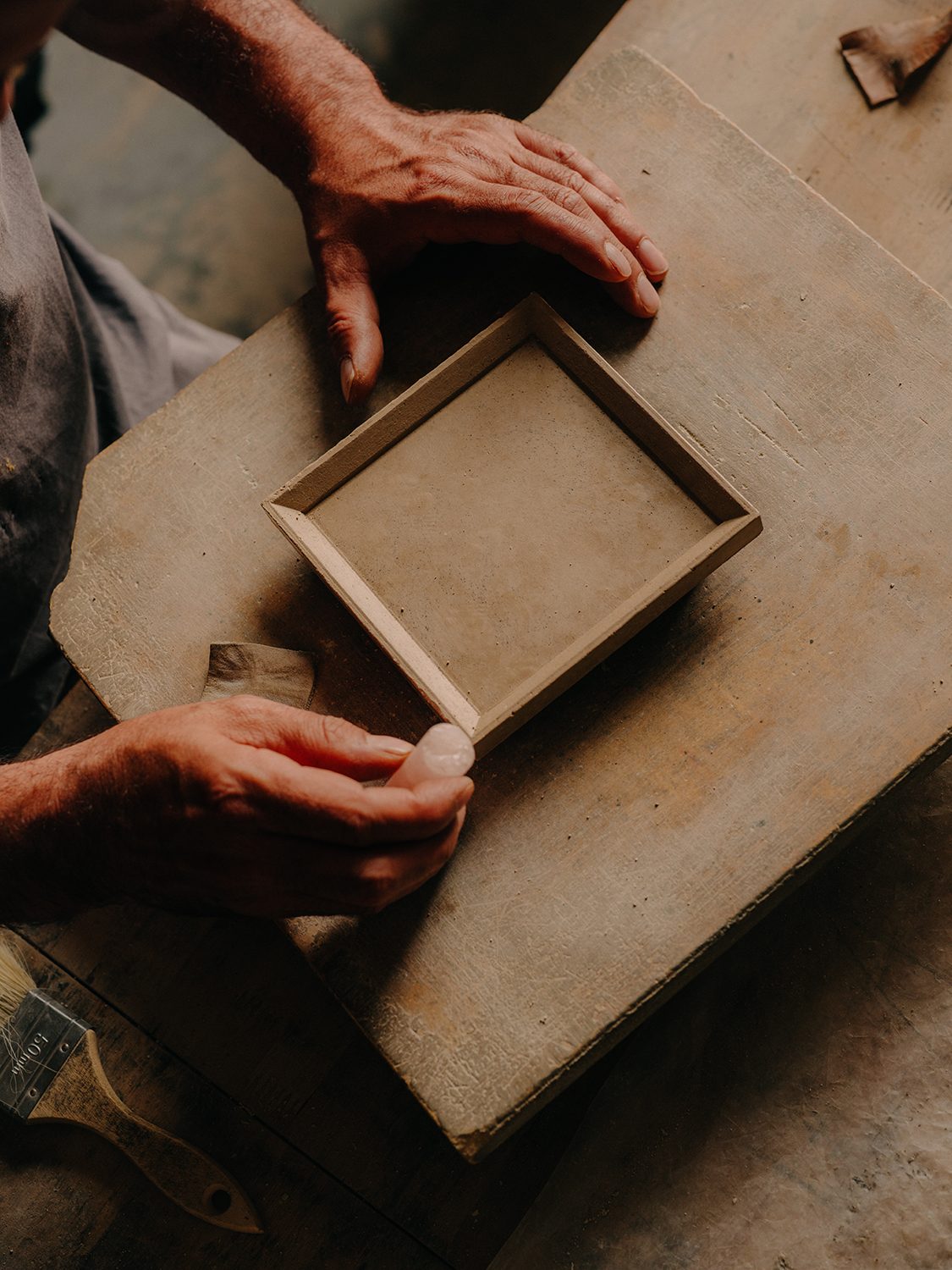
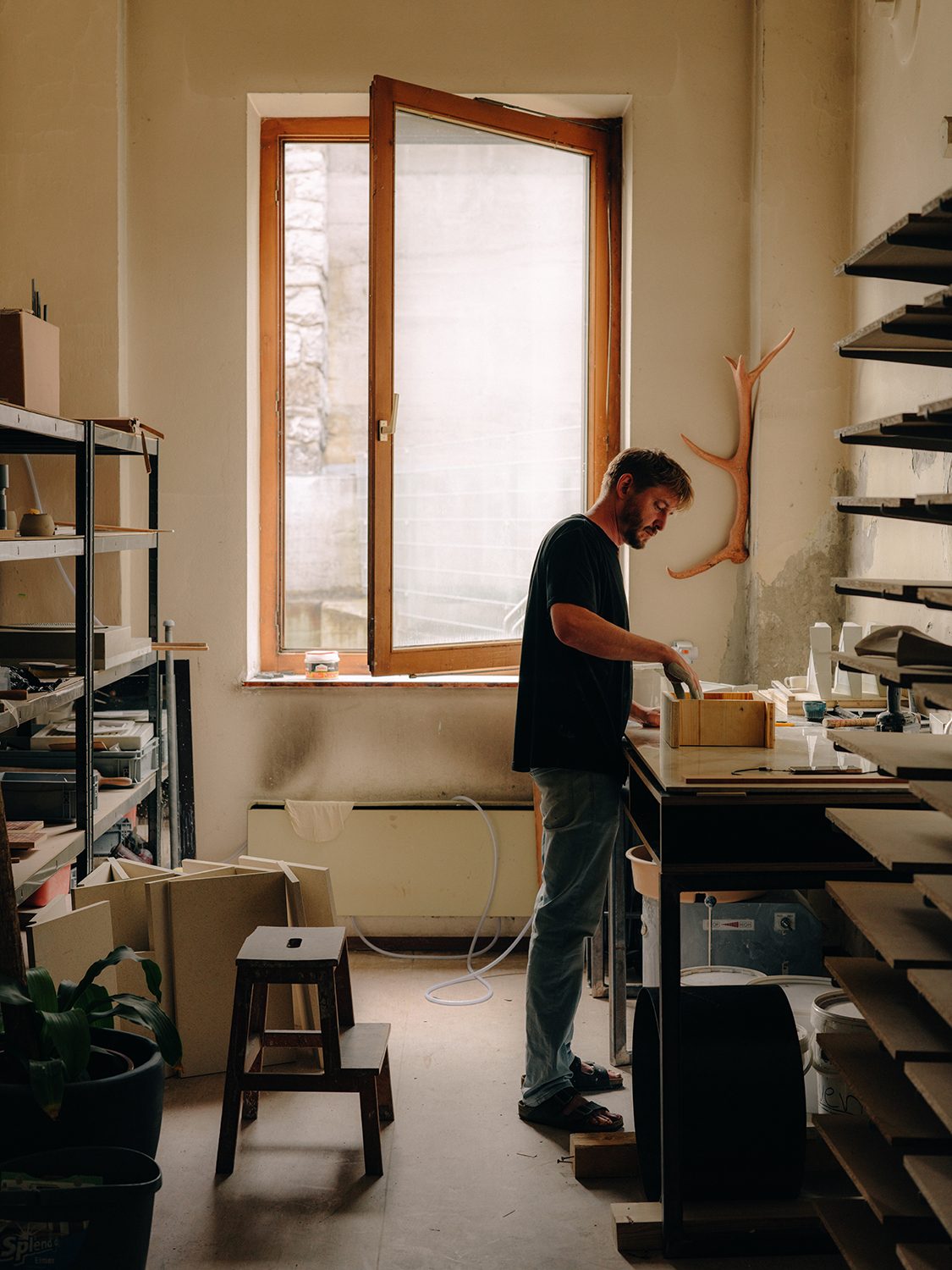
These spontaneous interruptions are the result of a 700-year-old ceramic technique where the tiles are fired indoors in an old furnace to 900 degrees. Afterwards, the hot ceramic tile is removed from the furnace while still glowing from the heat, and put into sawdust, creating an atmosphere around the tile. The reaction that this process initiates is uncontrollable, which is what makes these tiles so unique. The colors, the details, and the shapes that get imprinted into the tile keep changing .The end result is awaited with intrigue: What will this tile look like?
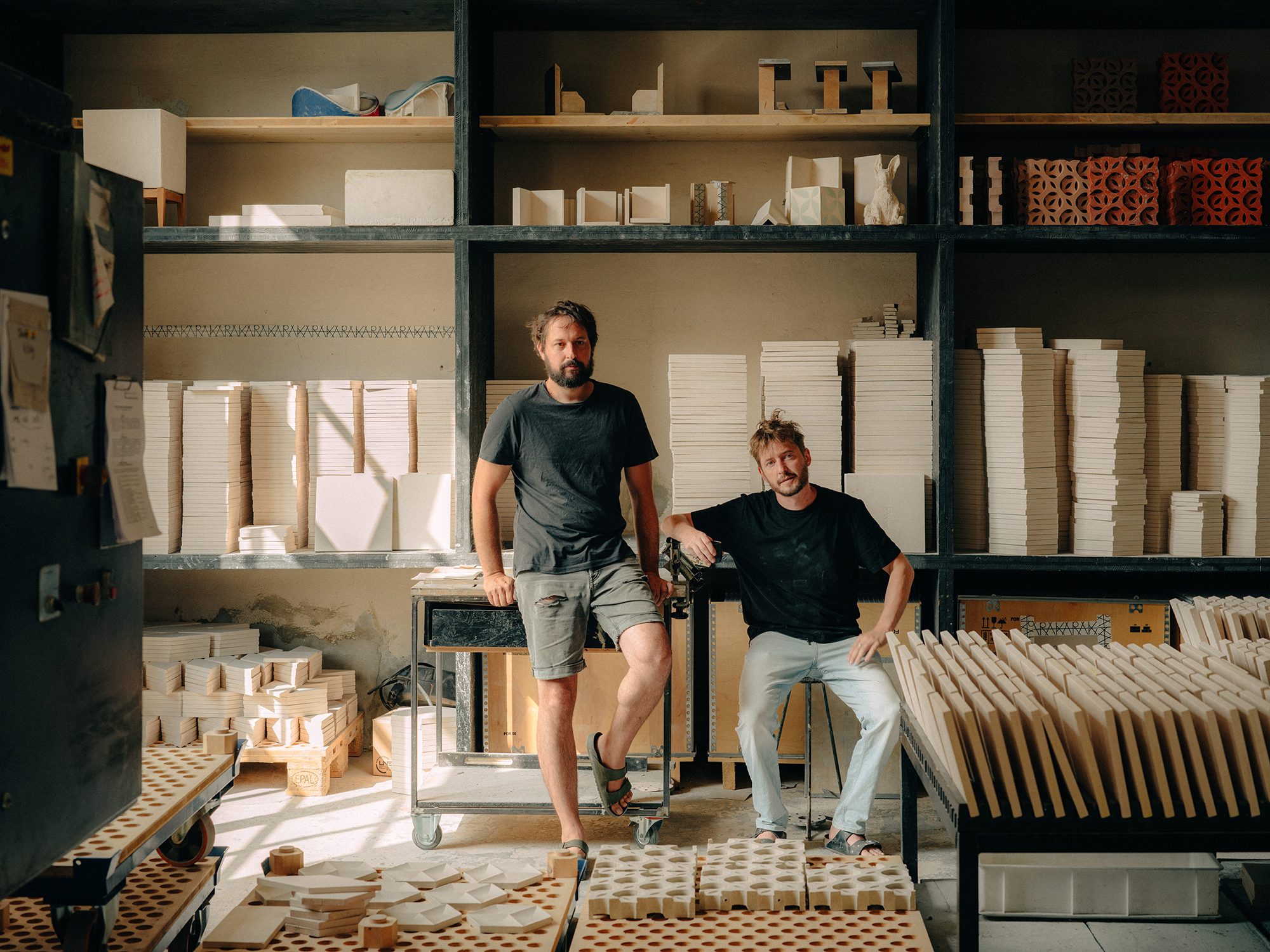
Maybe the first question that should be asked is how KARAK discovered this ancient form of craftsmanship, which they have maintained for over a decade, even when modernity seems to push everyone into efficiency. It was in 2007 that Marta Rauch-Debevec wanted to include ceramics with color and patterns in the house that she and her partner Martin Rauch were working on in Vorarlberg. Her son, Sebastian, who has now taken the reins of what she started, explains that his mother was always very material-focused: “She was drawn to this technique because of the juxtaposition between the elegance and the rawness of this process. It’s different”.
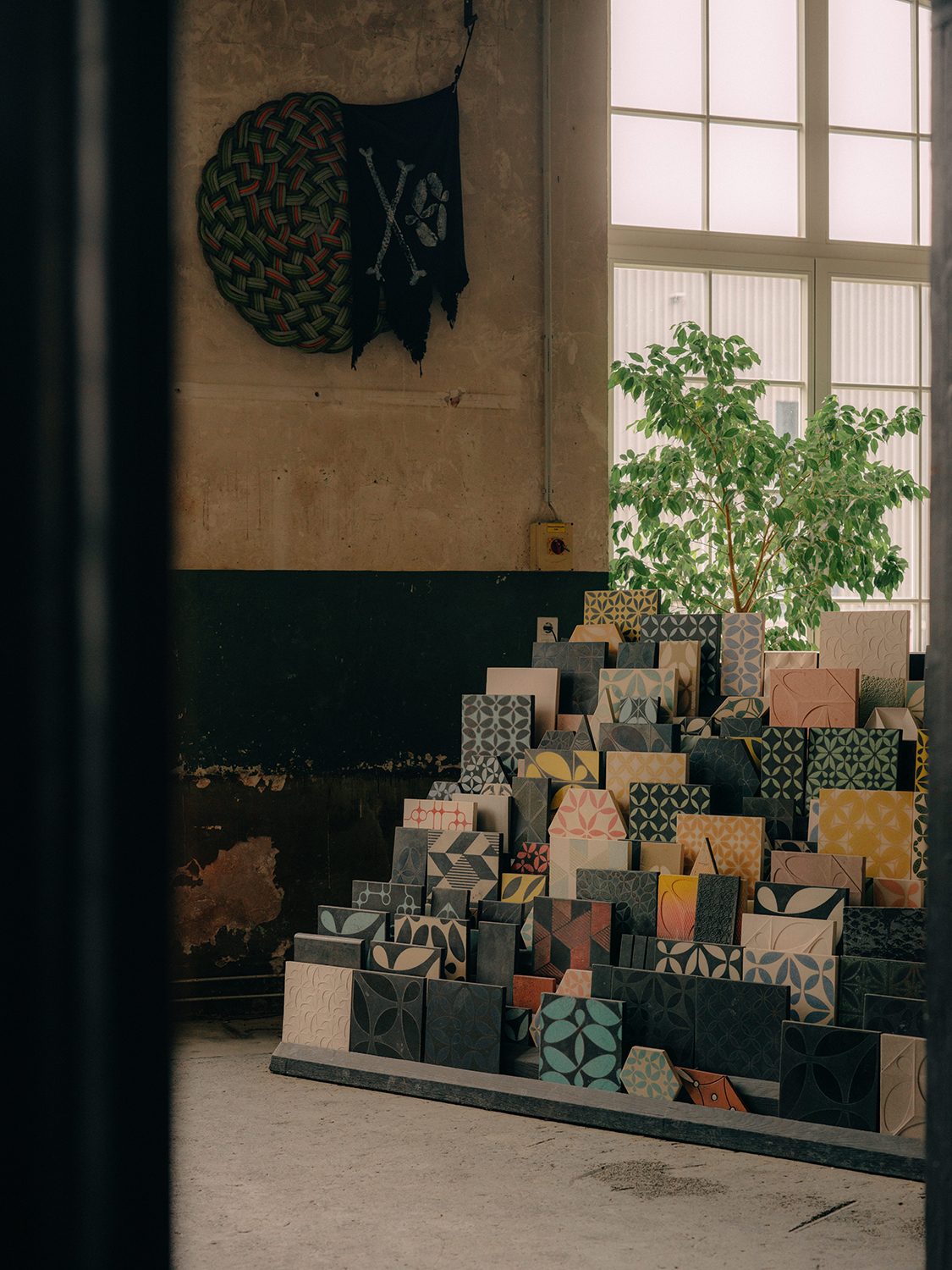
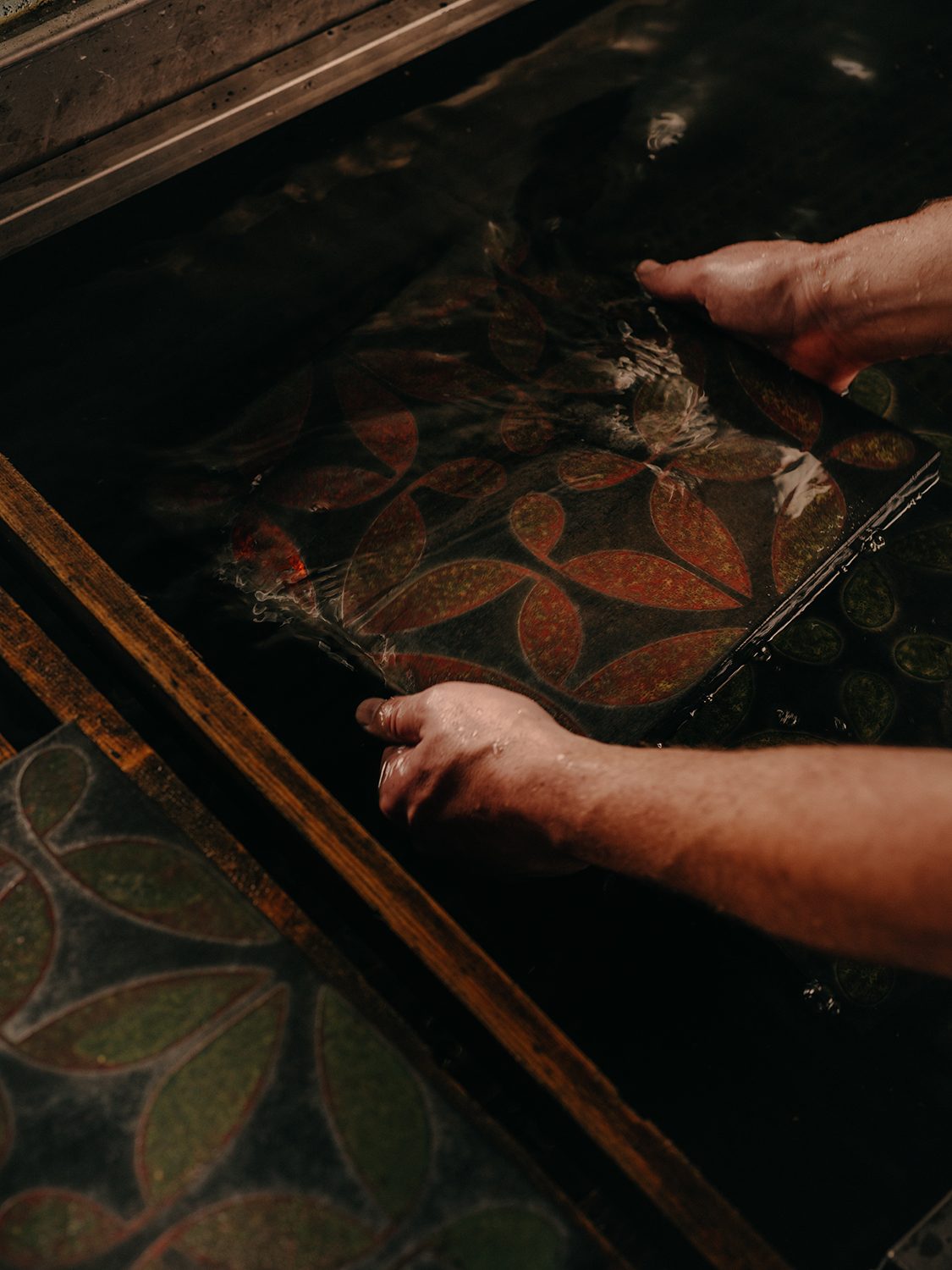
Without even knowing it, Marta planted the seeds of what has become a distinctive and unique brand whose craftsmanship and design are unmatched. “Without the intention of creating a company or anything, she asked me to draw ornaments because I like doing it”, describes Sebastian, “and somehow these tiles happened for this house”. The story could have ended there, but obviously it didn’t. “People started to ask where the tiles came from”, he explains.
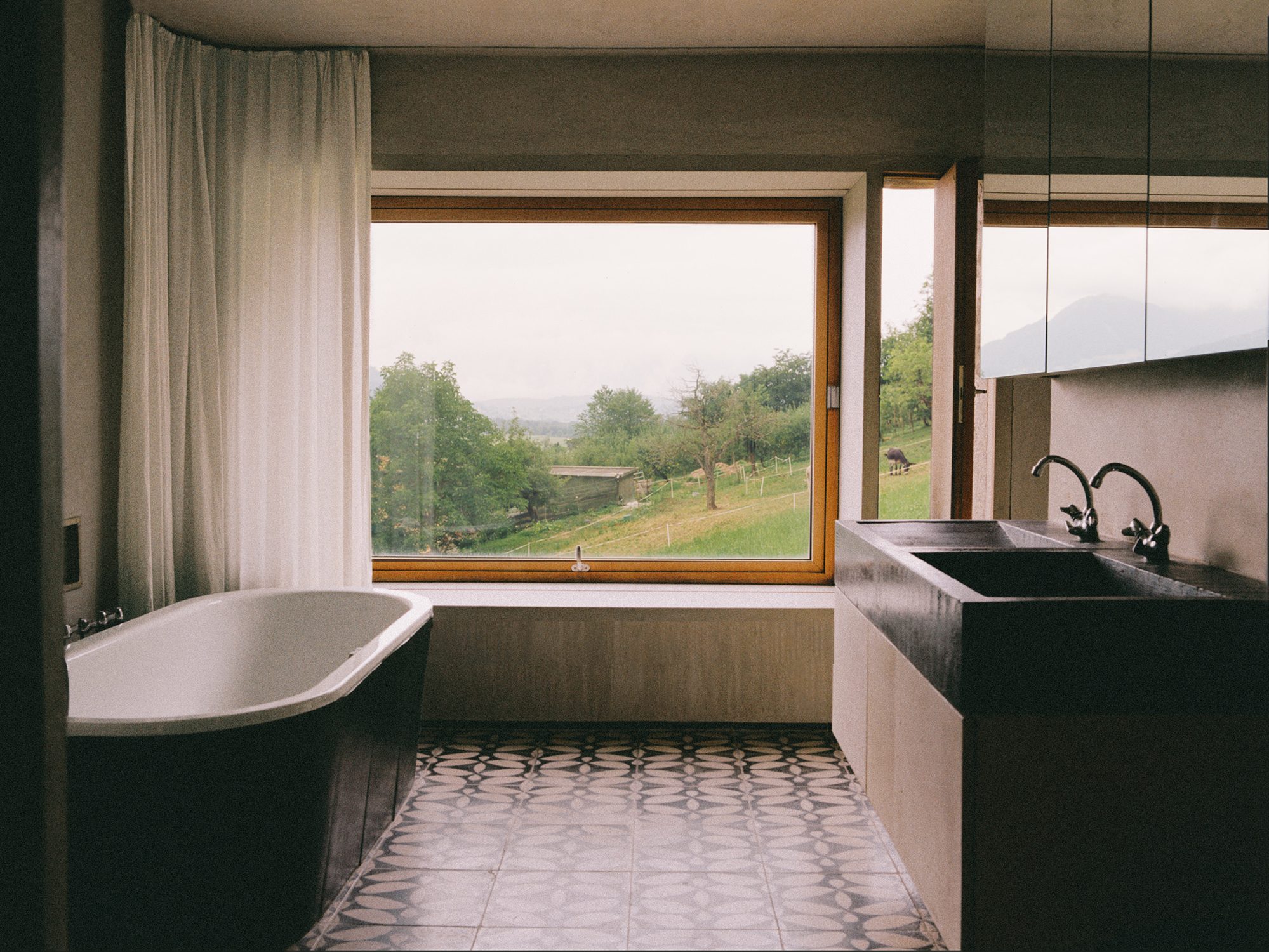
Progressively, the Rauch family, together with Sebastian’s childhood best friend and now business partner, Thomas Rösler, started to include this art in building projects as a side job during their studies. However, the turning point came in 2014 when Sebastian’s mother decided to retire. In the hopes of continuing the legacy of such a beautiful ceramic process and design, Sebastian and Thomas took on the adventure, and almost 10 years later there are now 9 people in the KARAK family.
“From an art project, it became a company”, expresses the son, “for us, it’s more like a kind of lab”. The duo describe KARAK as a workplace open to experimentation, always with a foundation of craftsmanship. “It’s not only about making something that looks beautiful, but also the process of making it has to be beautiful”.
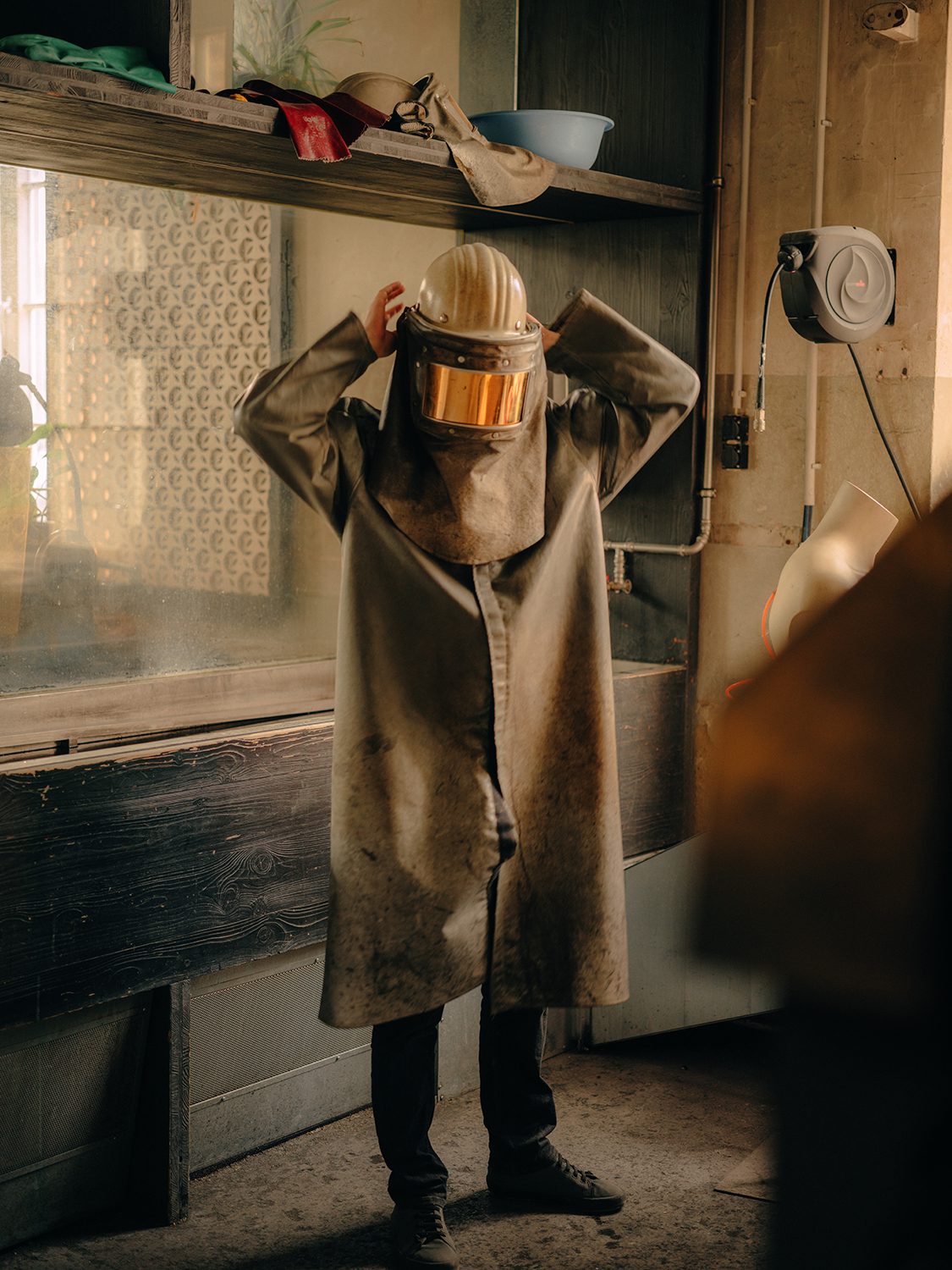
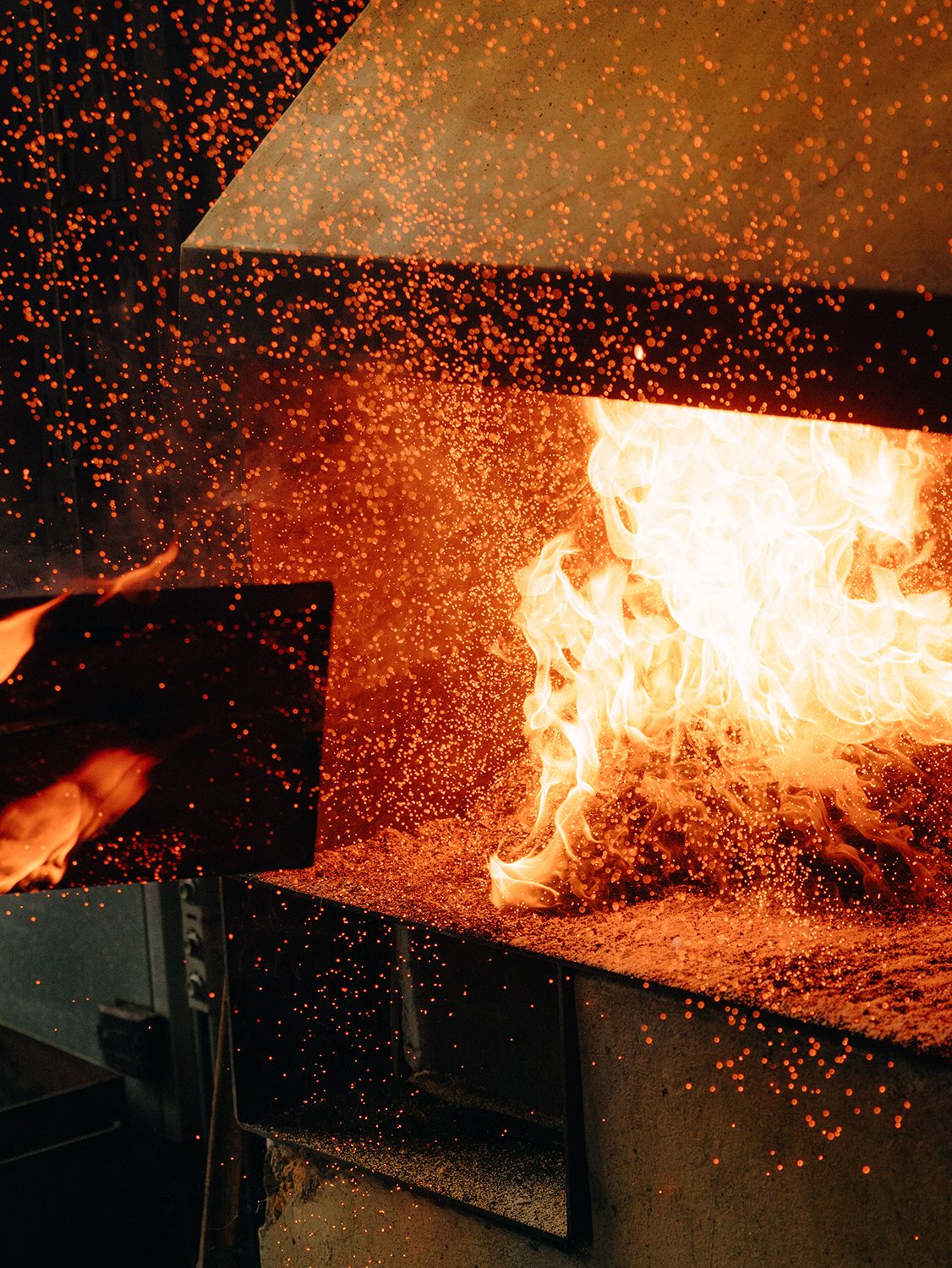
KARAK is partly defined by its unrepeatable (in a literal sense) beauty. “Actually, beauty is quite a big topic for us”, Sebastian emphasizes. “Nowadays, what is often meant by beauty is perfection and symmetry”, he continues, “but we believe in a Christopher Alexander way: beauty for us is the feeling when you look at something and it nourishes you”. Beauty isn’t an enclosed concept, but more of an experience or a sensation that something provokes in you. For KARAK, beauty is closely connected with sustainability, understood as a characteristic of the places that are beautiful because they feel good and that, because of this, they are cherished, treated well, and therefore have a longer duration.
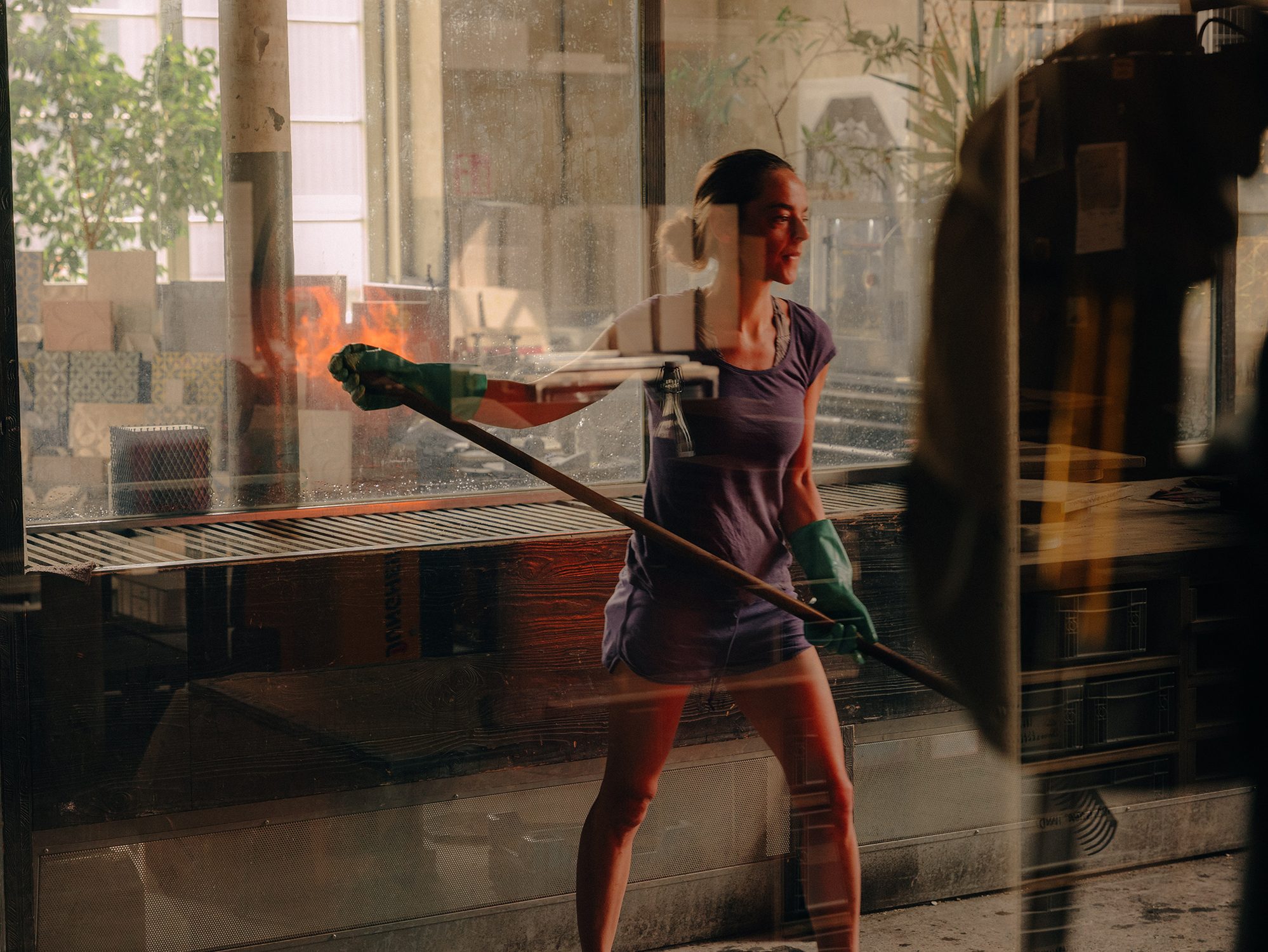
Feeling good is part of KARAK’s philosophy. It applies to their designs as well as to the company itself. And part of this comfortable environment and personality that they have created can be attributed to the beginning: “We didn’t really understand or live the rules they wanted to give us”, says Sebastian’s partner in crime, Thomas, grinning, “I think it has always felt like quite an adventure on our part to go through this thing”.
Against the initial premonitions of Sebastian’s family that the project wasn’t going to work out, the pair beat all odds—in their own way. “It was so funny because we came at 9:00, and they said we had to work at 7:00 in the morning, so we came at 11 o’clock”, remembers Thomas in between chuckles. It ended up working for the team that they created: “I would say it’s not a universal strategy, but it’s very good for us”, he continues. They underline how important it was for them to determine how they wanted the work environment to be: “We talked a lot about the work environment, we wanted to make it where the people can feel good, so the product can grow out of this habitat”.
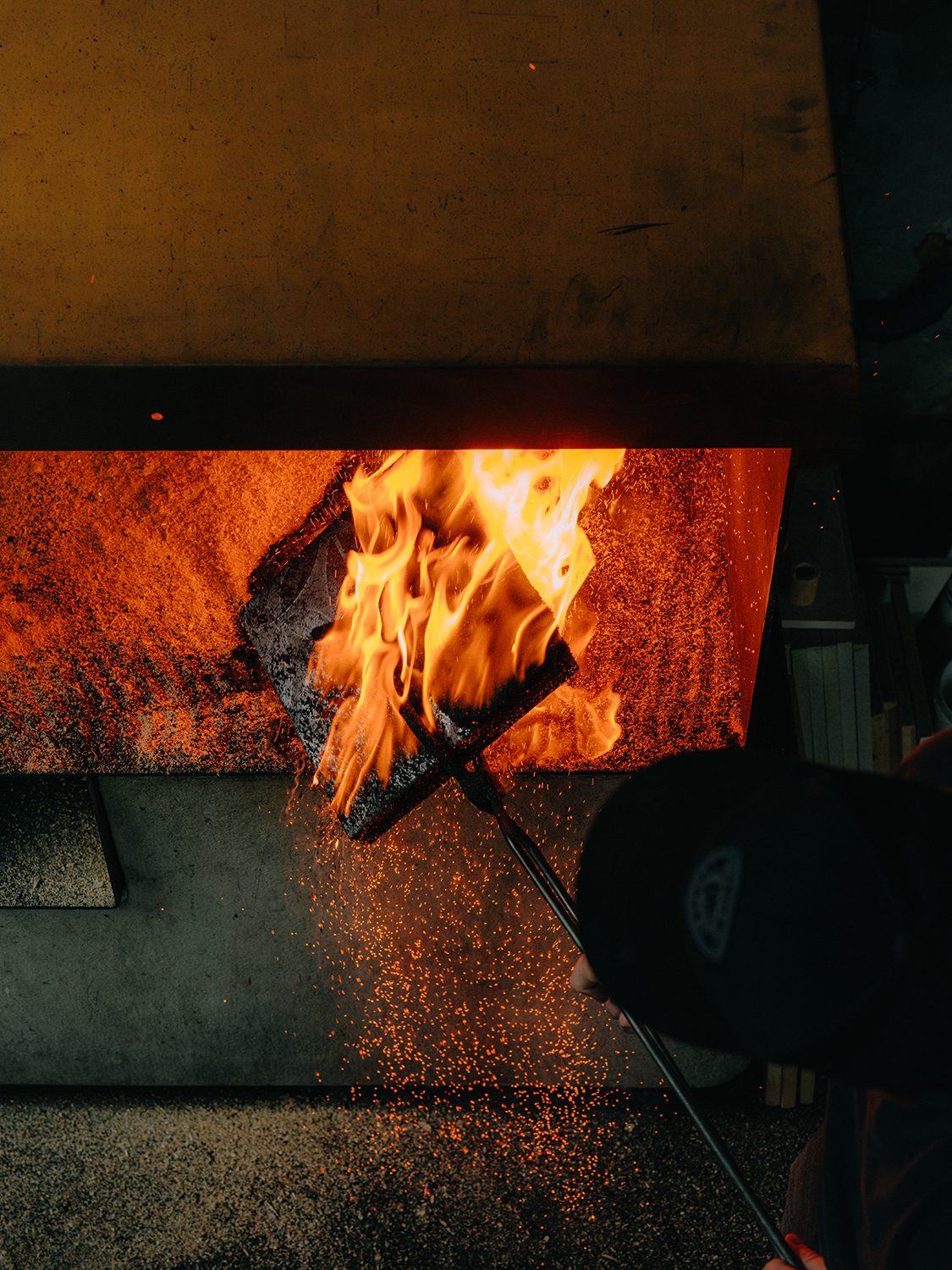
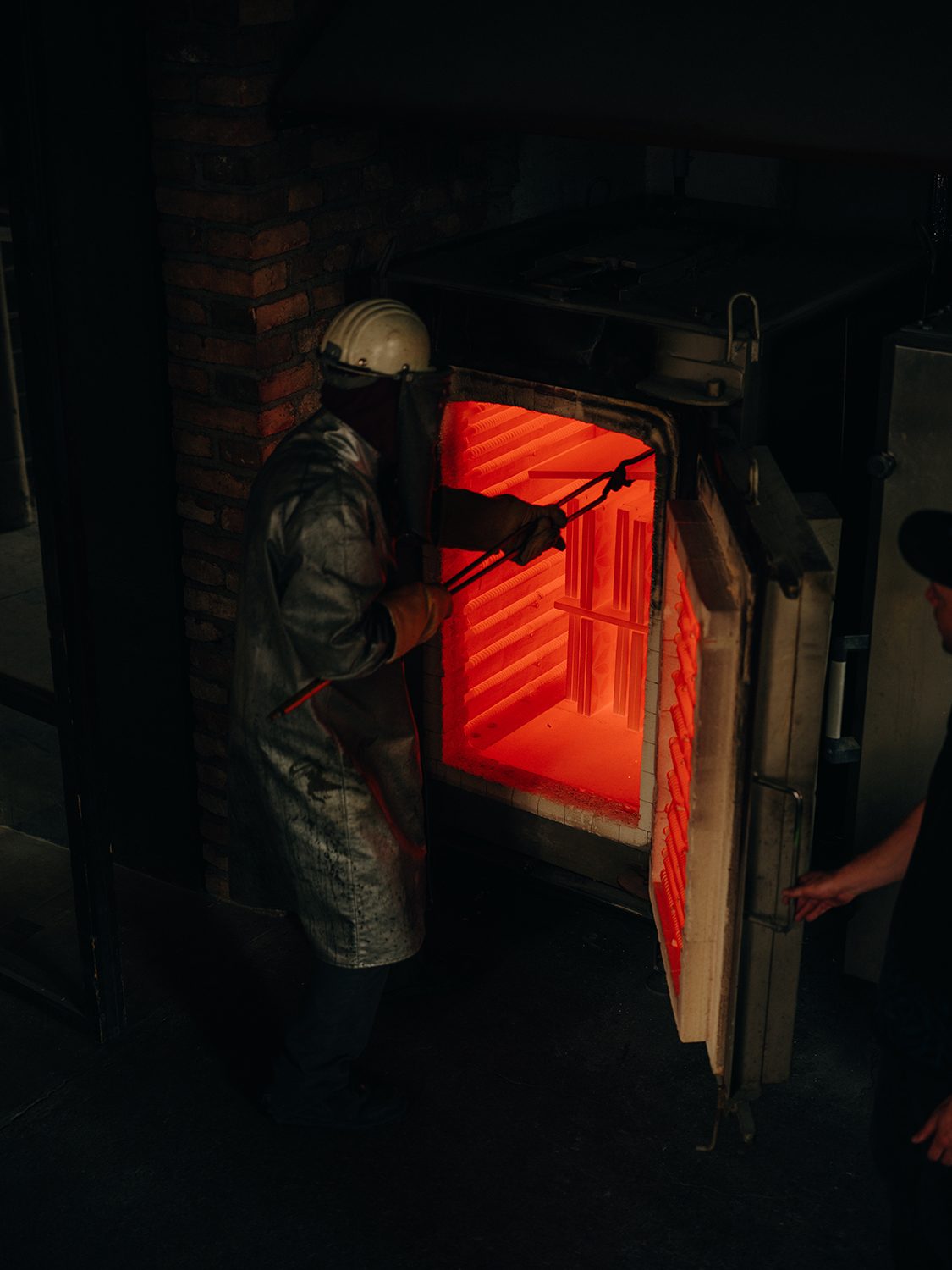
KARAK is currently exploring new territories in the design field, including collaborations with architects as well as furniture and lighting projects. The team is looking into different directions, but always with the main focus on keeping the core business of the tiles, preserving the craftsmanship that makes them so special. In fact, KARAK is probably the world leader in Raku ceramic manufacturing: “Nobody is crazy enough to do it”, expresses Sebastian ironically. As well known as the technique is and as appreciated by ceramists as it is, it is a slow-crafted process.“When we started, we spoke to a tile producer we looked up to, we told him we do Raku and he said it’s only for single pieces”, explains the captain. Even though the expert was actually right, KARAK can provide tiles for a whole surface made out of single pieces. Every tile is baptized by many different shades, making the surface so distinct and impossible to duplicate. In this sense, KARAK has a safety boundary where their designs are inimitable by mind or by other methods: “They just don’t feel organic as ours”.
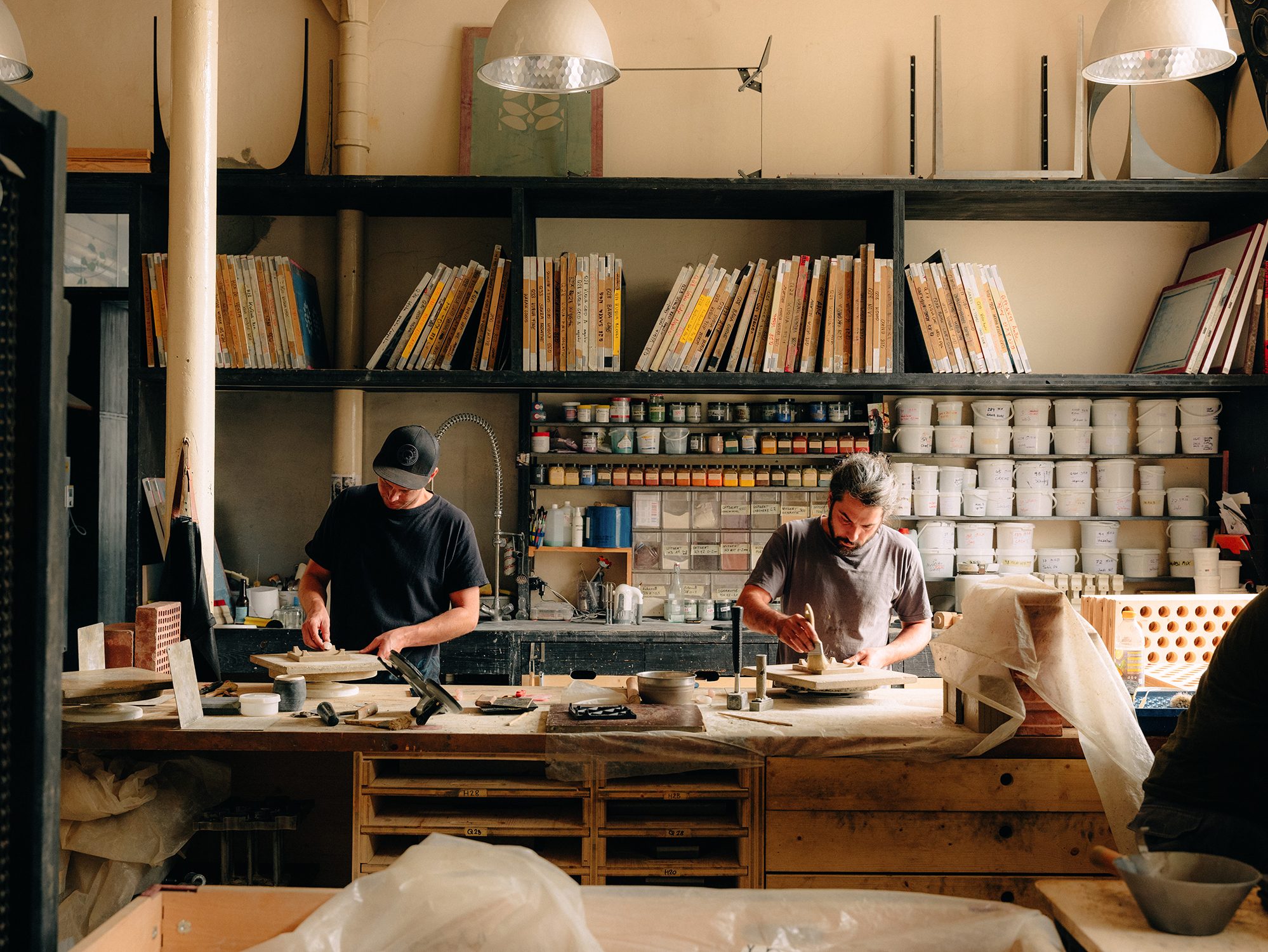
The team’s skills are diverse: Sebastian and his colleague Anne are graphic designers, and Thomas is a product designer with a focus on craft. However, this apparent division is actually impalpable: “It’s very hard to put a finger on who brings what”, discloses Thomas, “it’s more about the product itself, and if it works, it’s not about who it came from”. KARAK is centered on creating a safe, comfortable, and open space where creating is a collective task where everyone is involved in the process.
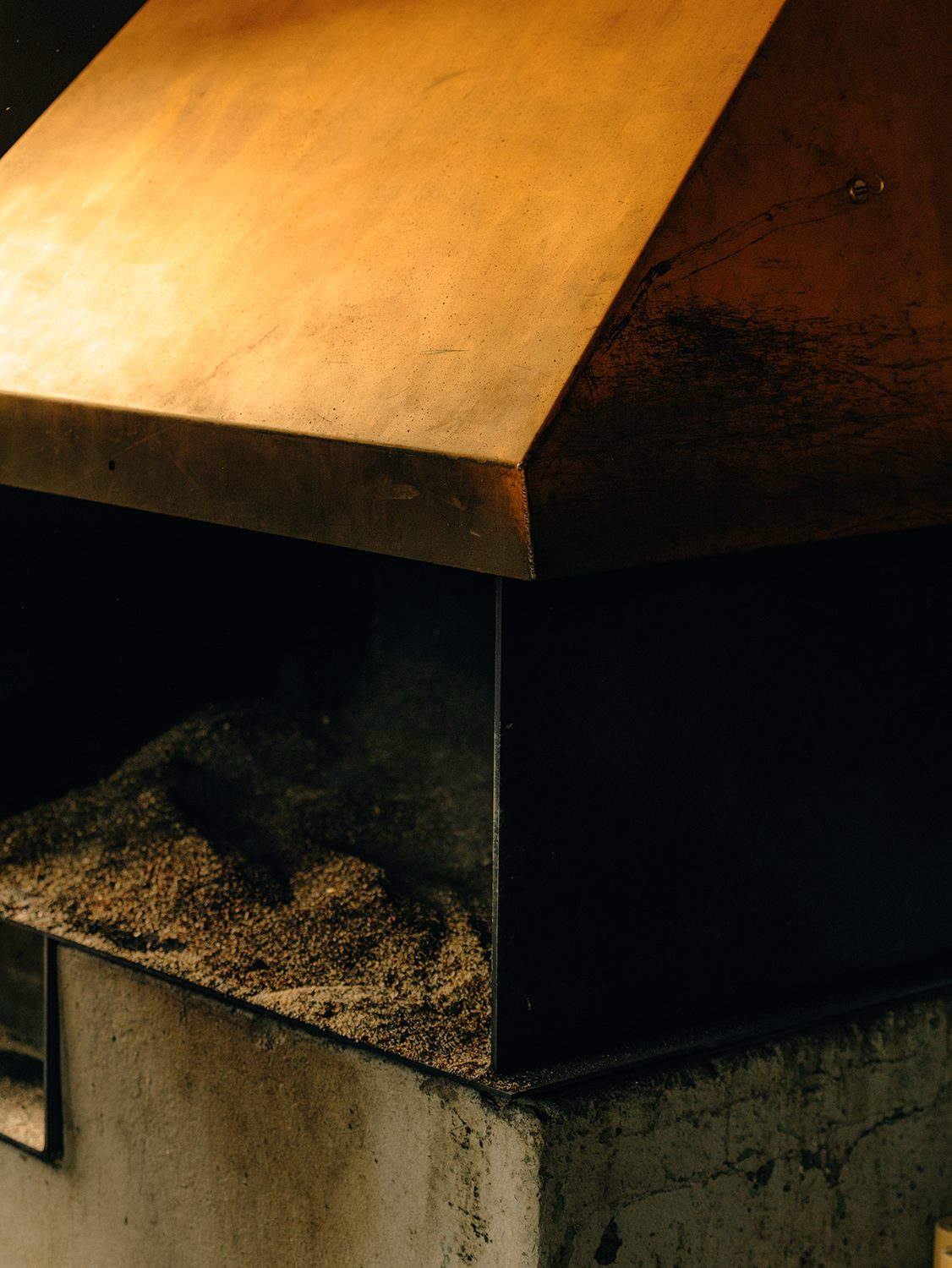
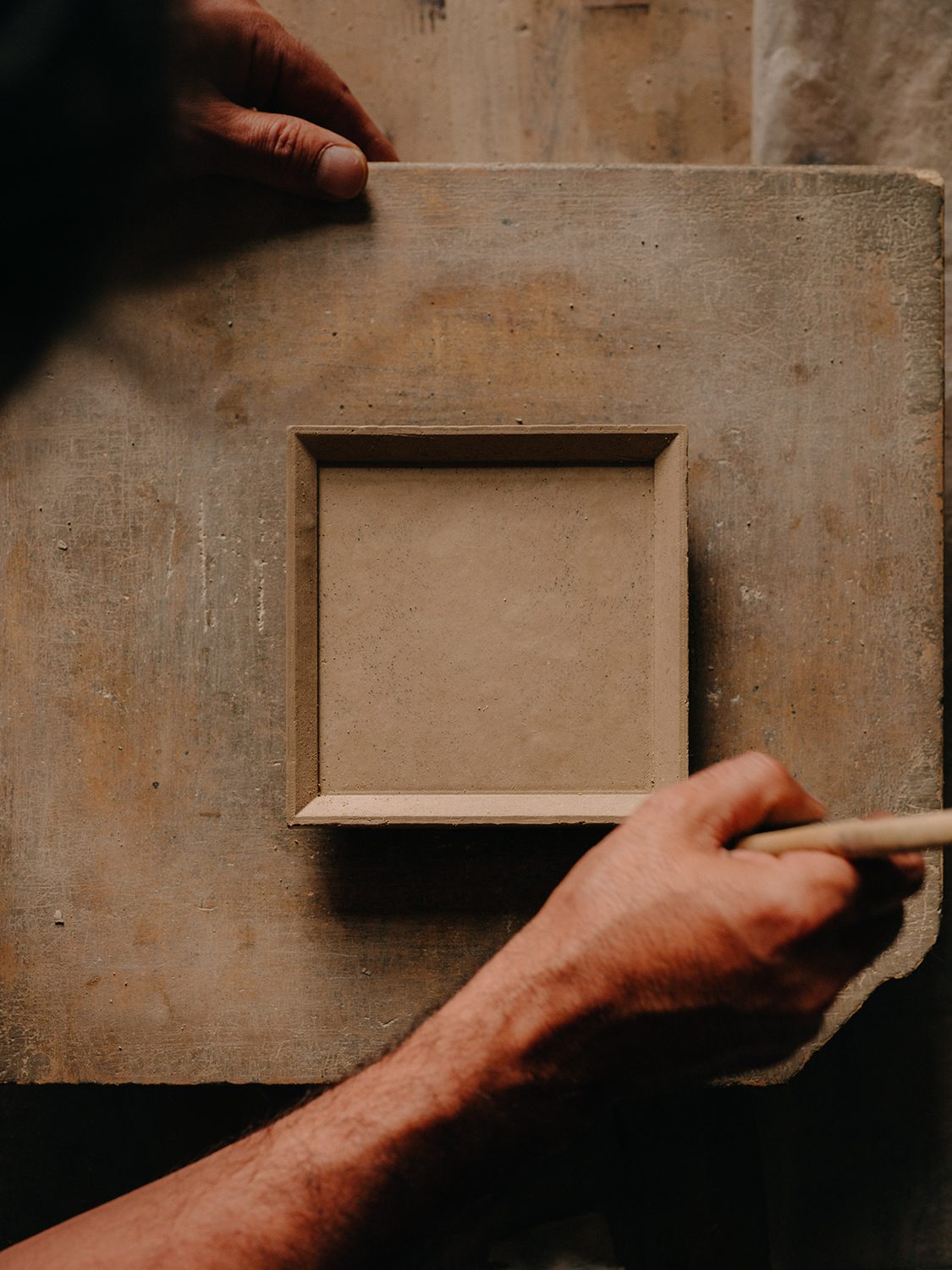
It is undeniable, however, that Sebastian and Thomas’ close friendship has had an effect on KARAK’s environment and personality. “We are quite different but in essence we are very much the same, it’s complementary”, describes Sebastian. Anne makes a brief appearance in front of the camera and points out: “They are like a married couple”. Having known each other since childhood, the trust that is ingrained in their relationship is solid, and allows a space to freely discuss and give birth to delightful surprises.
KARAK is about creating beautifully and creating beauty; it is about maintaining craftsmanship and cherishing the process; it is about planning the unexpected and exuding liveliness into order. KARAK is the delicate balance between chaos and order, and how this balance creates unique and unplanned interruptions of life.
